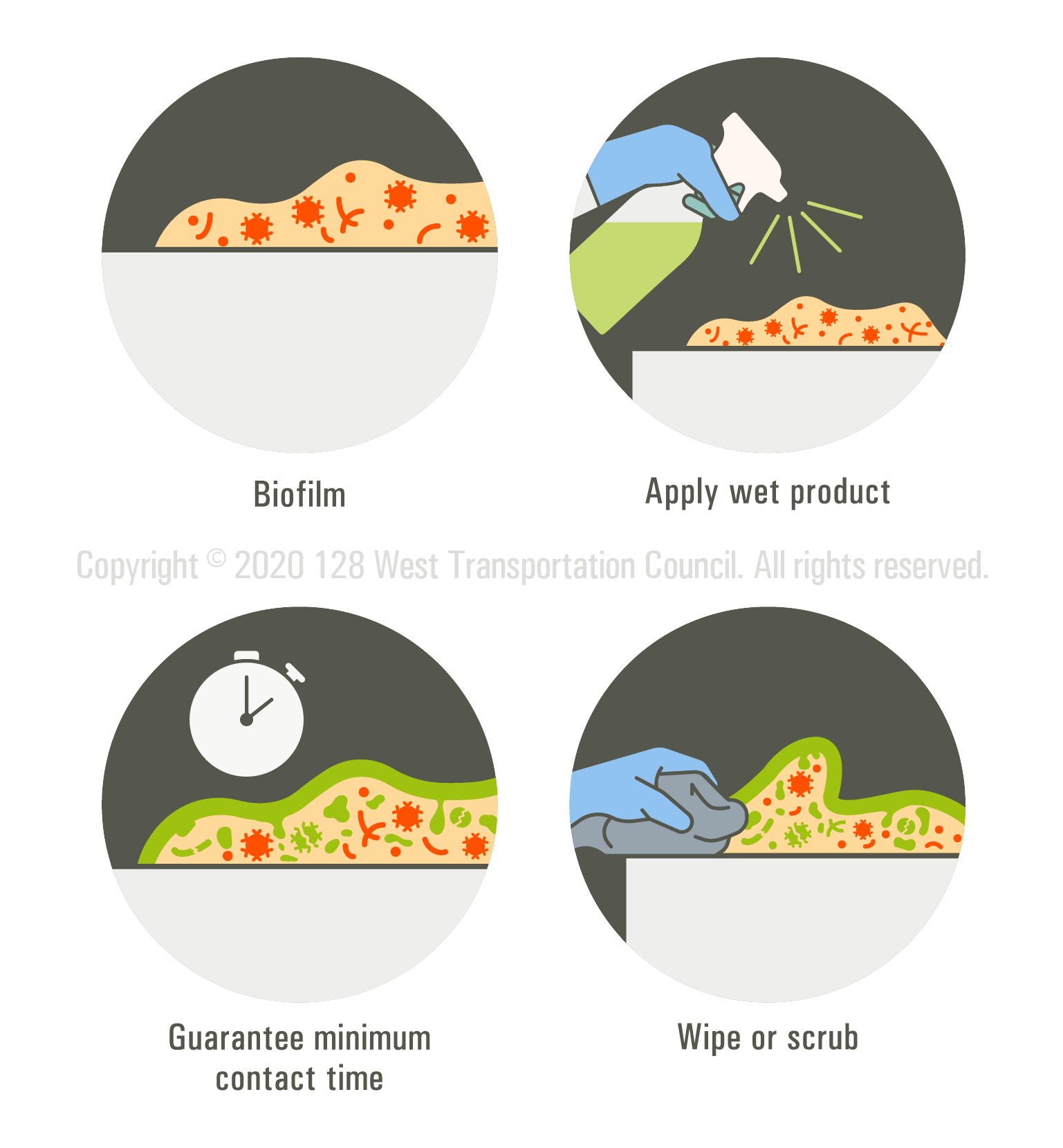 |
Multiple Layers of Cleaning |
Our shuttles undergo multiple layers of disinfection and cleaning. All frequently-touched and shared surfaces (e.g. handrails and seats) are cleaned between each and every trip.
Every day each shuttle also undergoes two rounds of complete interior disinfection and cleaning. (More on these two rounds below.) And then, all of the shuttles receive a final deep cleaning each weekend, especially focused on fighting the build-up of moisture and residue from all of those daily cleanings.
Additionally, if a single vehicle is to be used by different drivers on the same day, the cockpit area is carefully disinfected between those drivers’ shifts.
The speed and effectiveness of these multiple layers of disinfection and cleaning are partially dependent upon the physical structure of the vehicles themselves. Wherever it was necessary to add anything to the interior space, rigid and/or non-porous surfaces have been selected. The fact that our fleet was already fabric-free is also extremely helpful in this regard.
Safe Shuttle Cleaning Protocols
Describes 128BC’s industry-leading, multi-layered cleaning protocols. |
CDC-Approved Cleaning Products |
All wet cleaning products in use on 128 Business Council shuttles between trips and at the end of the day must be approved by the Center for Disease Control (CDC) specifically for use against SARS-CoV-2/COVID-19. A list of CDC-approved products can be found here. The complete list can be downloaded as a spreadsheet, allowing you to sort by contact time, manufacturer, etc.
Verification of a specific product’s efficacy is essential. We have encountered multiple instances of cleaning product manufacturers specifically marketing their products in reference to COVID-19 without meeting the disinfection criteria necessary for inclusion on the above list.
 |
UVC Disinfection |
As mentioned above, the shuttles receive two rounds of disinfection and cleaning each day. The first round of disinfection and cleaning uses CDC-approved wet products, while the second round uses industrial UVC disinfection units, similar to what is used in many hospitals. In addition to providing a second level of disinfection to frequently-touched and shared surfaces, UVC disinfection especially focuses on corners, cracks, and harder-to-reach surfaces.
Why UVC Disinfection? UVC disinfection is environmentally-friendly and, once the equipment is sourced, does not present supply chain challenges during periods of high demand for cleaning products. UVC cleaning is also non-toxic and non-corrosive; it is therefore easier on both the vehicle and those riding the vehicle. Relatedly, UVC disinfection leaves behind no moisture or residue–both of which can create the need for additional cleaning. Finally and possibly most importantly, UVC disinfection can reach surfaces easily missed by traditional cleaning procedures.
 |
Procedure, Procedure, Procedure |
Just “wiping down” surfaces isn’t sufficient. All wet products must be used in accordance with manufacturer and CDC specifications regarding the proper application procedure and necessary contact time. This is crucial because cleaning agents vary in terms of the amount of contact time needed for the chemical reaction to occur. If you wipe the cleaning product off or let it evaporate too quickly, you cannot guarantee that the surface has been fully disinfected.
But physical scrubbing or wiping is still essential to cleaning. UVC Disinfection alone would not be sufficient, nor would the use of the fog- or mist-based disinfection systems that you may have seen elsewhere. Physical scrubbing or wiping is necessary to disrupt any biofilm (viral cells that become stuck together and to the surface or material) that may be present.
